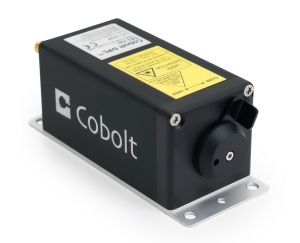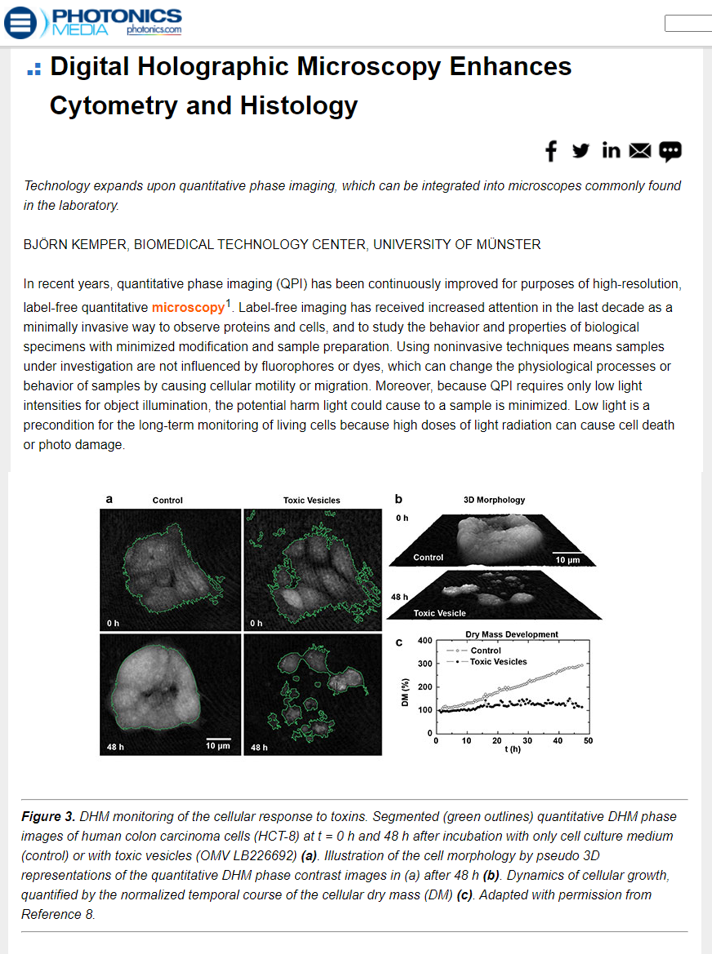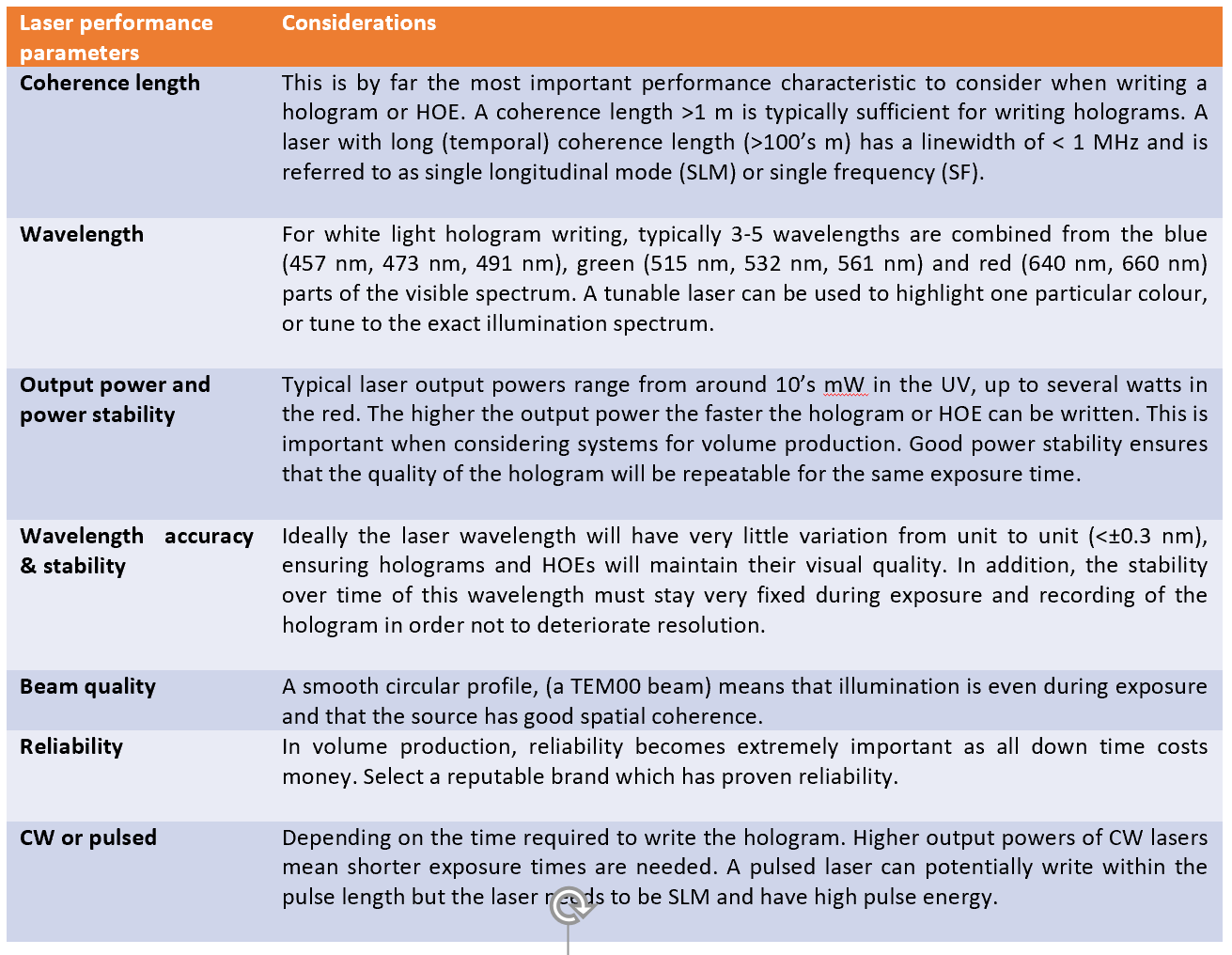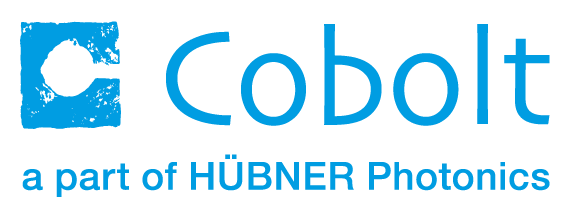Digital holographic microscopy with diode pumped lasers
Digital holographic microscopy enhances cytometry and histology
In recent years, quantitative phase imaging (QPI) has been continuously improved for purposes of high-resolution, label-free quantitative microscopy[1]. Label-free imaging has received increased attention in the last decade as a minimally invasive way to observe proteins and cells, and to study the behavior and properties of biological specimens with minimized modification and sample preparation. Using noninvasive techniques means samples under investigation are not influenced by fluorophores or dyes, which can change the physiological processes or behavior of samples by causing cellular motility or migration. Moreover, because QPI requires only low light intensities for object illumination, the potential harm light could cause to a sample is minimized. Low light is a precondition for the long-term monitoring of living cells because high doses of light radiation can cause cell death or photo damage.
Digital holographic microscopy (DHM)[2,3] is an interferometry-based variant of QPI that typically uses a laser as a coherent light source and provides QPI by detecting specimen-induced optical path length changes against the surrounding environment. DHM can be modularly integrated into common optical microscopes which allows its integration as a label-free imaging modality in research laboratories.
In DHM, reconstruction of digitally captured holograms is performed numerically by a computer. Thus, multifocus imaging of specimen parts in various layers is achieved — and even subsequent autofocusing from single captured digital holograms — without the need for mechanical focus realignment5. This is advantageous for the correction of unpredictable focus drifts during long-term observations of living cells, or for imaging of cell movements in 3D environments such as collagen or gel matrices. In addition, DHM-based phase contrast imaging can simplify automated object tracking and image segmentation for quantification of cell migration and morphology by extraction of absolute biophysical parameters such as cellular volume, thickness, and dry mass1. Moreover, the evaluation of quantitative DHM phase images provides access to optical parameters such as the cellular refractive index, which is related to the cellular water content, intracellular solute concentrations, and tissue density. This qualifies DHM as a viable label-free cytometry tool for the identification and characterization of tumors, blood, and stem cells in mixtures or composites; for time-lapse in vitro toxicity and drug testing; and for ex vivo histology of dissected tissues.

Lasers for digital holographic microscopy
The most important performance parameter requirement on a laser for DHM is the coherence length. By coherent this mean that all the light waves travel in synchronization i.e. they have the same period and phase, and this characteristic is found in truly single longitudinal mode (SLM) or single frequency (SF) lasers. The coherence length of a light source is directly correlated to the spectral linewidth of the emitted light (temporal coherence), as well as the homogeneity of the phase front over the beam cross section (spatial coherence). The distance the light needs to be coherent over in order to make an interference pattern is determined by the depth of field; the larger the depth of field the longer the coherence length that is needed. Regularly a coherence length of >1m is more than sufficient. However, typically a larger coherence length allows for more complex and flexible holographic setups.
Besides the coherence length, there are a few other parameters which are important to be considered when selecting a laser for DHM. The wavelength is not so critical so other visible colours could also be used. Direct light modulation at up to 10s Hz frequencies, as needed, for example, to minimize the light exposure to living biological specimens during time-lapse investigations. A directly modulated compact SLM laser is therefore highly attractive. Since fiber delivery simplifies the design, the beam pointing stability is important to avoid power fluctuations at the sample, as is the beam profile in order to maximise coupling efficiency.


Author: Björn Kemper, BIOMEDICAL TECHNOLOGY CENTER, UNIVERSITY OF MÜNSTER
1. Y.K. Park et al. (2018). Quantitative phase imaging in biomedicine. Nat Photon, Vol. 12, pp. 578-589.
2. B. Kemper and G. von Bally (2008). Digital holographic microscopy for live cell applications and technical inspection. Appl Opt, Vol. 47, pp. A52-A61.
3. B. Kemper et al. (2019). Label-free quantitative in-vitro live cell imaging with digital holographic microscopy. In Bioanalytical Reviews. Vol. 2. J. Wegener, ed. Springer Nature Publishing: Basel, Switzerland.
Read the full article in EuroPhotonics 2019 here.





